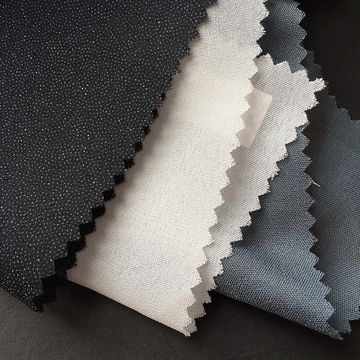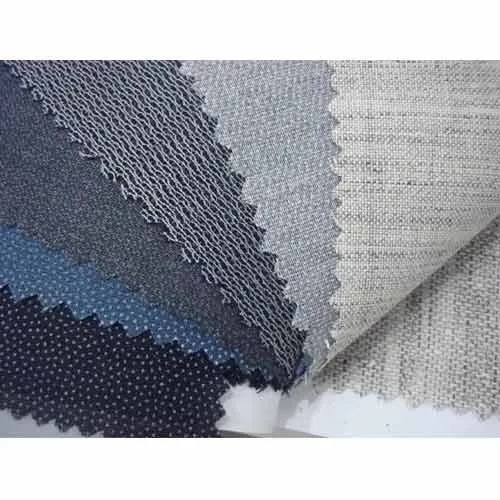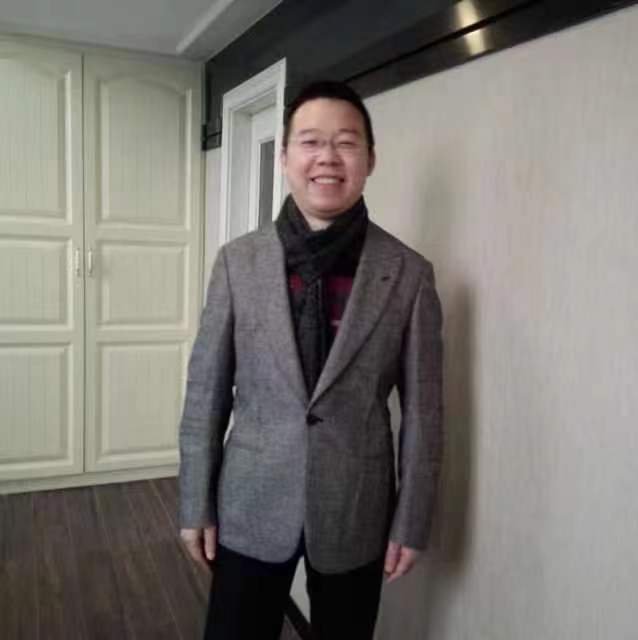Introduction
Interlining is an important part of the textile manufacturing industry. It is nothing but a piece of fabric that joins two parts of fabrics together. In simple words, it provides support and shape to your manufactured garments. There are different types of interlining available in the market. You can choose the right type based on fabric usability and final outlook.
Woven interlining is one of the famous and most common types of interlining. You can get this interlining in viscose, cotton, rayon, and silk fabrics. Woven interlining comes under the fusible interlining category. It is a variant interlining. Woven interlining fabrics are more flexible and soft when compared with nonwoven interlining fabrics.

When finding the right interlining companies, you must clarify the differences between woven and nonwoven interlining. These two categories are the most usable interlining categories. Based on your requirements and other factors, you need to decide whether you have to choose a woven or nonwoven interlining.
If you are new to this field and want to explore more about woven interlining, you have come to the right article. This article will give you information about the important characteristics of woven interlining and other basics. Once you read this article, you can easily purchase a high-quality interlining for yourself. Continue reading the blog post!

What Is Woven Interlining?
Now that you have read about the introduction of woven interlinings, you may want to know more about it. Woven interlinings are used for tailoring purposes in the fashion industry. Like other interlinings, woven interlining also aims to support, shape, and correct the outlook of your fabrics. It is also named woven interfacing.
You should note that the major category of interlining is divided into further categories based on multiple factors. For example, when you consider the factor as the base fabric, your interlining is divided into three main types:
✓Woven interlinings
✓Nonwoven interlining
✓Knits interlining
It is said that woven interlining was utilized about 100 years ago to support the fabrics such as coats, gowns, hats, and cloaks. Manufacturers used starch application to make it stiff with 100% cotton fabrics. At that time, it was nonfusible interlining. However, it had unpleasant irregular characteristics and hard touch. This led to the invention of fusible interlinings.
A layer of adhesive was applied on normal cotton sheeting fabrics. It was fixed to the main shell fabric by applying pressure and heat. It formed a fused shell part, resulting in a better shape and look. There is variable count thread density in woven interlinings with 100% cotton material.
Now it is also available in warp and weft combinations and polycotton materials. Woven interlining can be the right choice if you are mainly looking for stranger strength and stability. However, it may not perform well when you only need softness and flexibility.
With all this information in mind, you should also know that woven interlining is more expensive than other options.
Difference Between Woven & Nonwoven Interlining?
Sometimes, it can be challenging to differentiate between woven and nonwoven interlining. You must know the techniques and methods to differentiate between these interlining types. If you don’t know, don’t worry. You will learn about it as well.
When you check the woven interlining, you will see one side with higher roughness. This rough side has fusible glue applied to it. Moreover, it is composed of cotton fabric. On the other hand, there are compressed and agglutinated fibers in nonwoven interlining. It also has rough-sided fusible glue.
Simply put, you can check between the two through a touch. A nonwoven interlining will feel more like a sheet of paper, while a woven interlining feels like a soft fabric. Nonwoven interlining is not manufactured through a textile cloth in most cases. Therefore, you may not feel a soft touch while handling it.
Key Characteristics Of Woven Interlining
Since woven interlining gives more feel like a fabric, it has too many applications. At the same time, it has multiple characteristics and advantages you will not find in nonwoven interlining fabrics. The high-quality characteristics of woven interlining make it more usable and demandable for textile manufacturers.
The best part about woven interlining is that it can stabilize and malleable your clothes. It is mostly found in plain weaves. Based on your application needs, you can also find this interlining in the form of twill weaves, herringbone, and crepe. Some main characteristics of woven interlining are listed below:
Softer feel Of Woven Interlining
- As mentioned earlier, touching the woven interlinings gives you a soft feel. This thing can not be observed when checking the nonwoven interlining fabrics. It can also provide stiffness to your clothes with amazing softness properties. This ensures that woven interlining can also serve the purpose of suppliers.
- You can find it more appealing and popular with the apparel interlining due to its sheer advantages of softness and comfort.
Better Stretchability
- Woven interlining fabrics are not rigid and harder when compared to nonwoven interlining. You can feel the stretchability in the woven fabrics due to their soft cotton material. You can call it an important key feature of woven fabrics. It can become highly stretchable under the demanded conditions. Hence, it results in maximum comfort.
- Interlinings determine how long your garments can last in good quality. Having a durable and high-quality interlining can maximize the life of a garment. Woven interfacings also maximize the durability of the fabrics. Therefore, you get a longer lifespan for your garments.
Lightweight
- Woven interlining offers a very lightweight. Therefore, these interlining fabrics are quite popular in the garment manufacturing industry. The suppliers use woven interfacing in multiple cloth parts without making them heavier in weight. This is how you get a structured and stiffed cloth manufactured in a very seamless way.
Eco-friendly Fabrics
- It is important to take care of the environment while producing any products. You must know that any product is approved in the market after ensuring that it might not harm the environment. When woven interlining became popular in the market, its eco-friendly nature was the most popular reason behind its popularity.
- Woven interlining is made of naturally degradable materials and soft cotton fabric. This is what makes the interlining quite environment-friendly. On the other hand, when you check the nonwoven interlining, you will find it nonrecyclable and non-environment friendly. It is composed of artificial components. Hence, it is not environmentally friendly.
- Ensure that your manufacturer is producing the woven interlining according to the required standards of your country when opting for foreign trade. Also, you should know that the supplier is not using harmful raw materials in the production process.
Better Strength Of Bonding
- When you deal with woven interlining, you will see better bonding strength and flexibility. The higher stretchability of this fabric makes a stronger fusing bond. There are low tearing risks in woven interlining. At the same time, there are low chances of damage to the fabric.
Advantages Of Woven Interlining
After knowing the characteristics and other basics of woven interlining, you must know its advantages. Knowing the advantages can make sure whether the particular woven interlining is suitable for your needs or not.
Since you need to use these interlinings in sewing bags and other such products, you should ensure they are stable enough to support your products. To keep your business values higher, you should choose a better quality of interlining at the best price. Look at the following benefits of having woven interlining for your fabric industry:
Adding Structure To Your Clothes
You must have seen that embroidery clothes are always stable in structure. Do you know why? It is all due to the addition of interlining to the underneath part of embroidery clothes. You can bring an amazing structure to the texture of your embroidered fabric. This is how your design gets fitted properly on the cloth.
At the same time, woven interlining can add structure to the body using fabrics like organza or silk. You get a firm layer inside your fabric through woven interlining.
Prevention Of Creasing
Garment distributor companies are mostly concerned about the creases in the clothes. This problem can also be solved using woven interlining. Woven interlining is used to prevent the outer crease of the fabric and make it look more attractive.
Addition Of Density To Your Garment
You can make your garments dense and heavy by adding woven interlining. Garments can have better fitting due to their dense nature. If you want the woven interlining to go better with your garments, you should add extra layers of interlining. Extra padding can also be used for this purpose.
Conclusion
Knowing all the best characteristics and benefits of your woven interlining, now you must want to buy it. So, contact us now if you are looking for the best manufacturer to produce woven interlining. With an experience of several years and highly qualified staff, we can serve your better than any other dealer.

